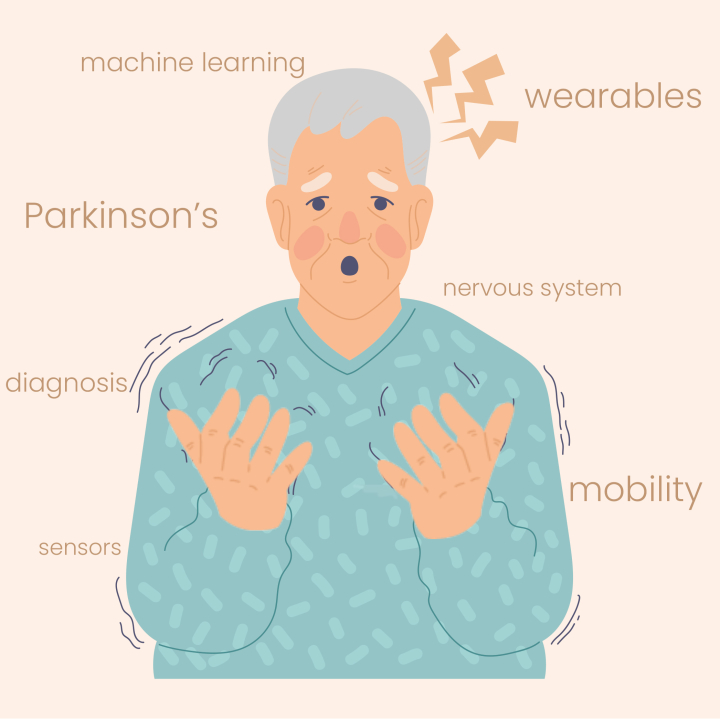CBCB Team Publishes Innovative Research on Improving Parkinson’s Disease Diagnosis
Researchers in the University of Maryland’s Center for Bioinformatics and Computational Biology (CBCB) have just published research that may soon help doctors better diagnosis patients with Parkinson’s disease.
Their work, done in tandem with researchers at the University of Maryland, Baltimore and others, uses machine learning algorithms to analyze data from wearable sensors that track movement. Ultimately, the researchers say, this can lead to more accurate and earlier diagnoses of people suffering from Parkinson’s, which in turn can lead to earlier therapeutic interventions.
Rana Khalil, a sixth-year Ph.D. student in computer science at UMD and lead author of the paper detailing the research, worked on the project with her adviser, Michael Cummings, a professor of biology who is the director of CBCB.
The project was funded by a $150,000 seed grant from the University of Maryland Strategic Partnership: MPowering the State, known as MPower, an initiative that fosters collaboration between the University of Maryland, College Park, and the University of Maryland, Baltimore.
Parkinson’s disease is a nervous system disorder that affects movement. It has a slow onset, starting with mild symptoms, such as a subtle tremor in one hand, that may progress to severe muscle rigidity and an inability to walk without help. According to the National Institutes of Health, approximately 500,000 people in the U.S. have been diagnosed with Parkinson’s.
But because many people are undiagnosed—or have been misdiagnosed—experts believe that as many as one million Americans may have the debilitating disease.
This considerable discrepancy highlights one of the central problems faced by clinicians and patients: the challenge of accurately diagnosing the disease. “The diagnosis of mobility disorders is very difficult,” explains Cummings. “Much of the process is subjective, and as such, isn’t highly accurate.”
As currently practiced, doctors diagnose patients with Parkinson’s by asking them to do a variety of mobility tasks, observing their walking and movement patterns, and testing their reflexes. However, this process is time-consuming and requires a lot of effort from both the clinician and the patient.
Click HERE to read the full article
The Department welcomes comments, suggestions and corrections. Send email to editor [-at-] cs [dot] umd [dot] edu.
